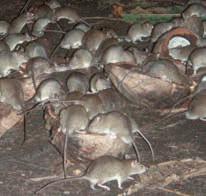
14 minute read
Protected Areas
PrESSurE SEaBIRDS aND SHOREBIRDS
Fiji’s seabirds suffer from unsustainable harvesting by man, predation by rats – augmented by feral cats and pigs at certain sites – and loss of breeding habitat to developments like tourism. Some important seabird nesting sites are vulnerable to sea-level rise and climate change.
Advertisement
Our colonial nesting seabirds have come under increased threat in the last 20 years with the rapid spread of outboard engines enabling landowners to quickly and easily travel to remote nesting colonies. Over-harvesting and frequent disturbance cannot be sustained indefinitely by these seabirds.
Poor planning and environmental control has led to some significant seabird nesting sites being leased to tourism operators without any provision for the nesting birds. Prominent amongst these are Wailagilala (Fiji’s only true atoll), which has one of Fiji’s largest colonies of Brown Noddy and several other seabirds; Nanuku (Ringgold Isles); Vunavadra (Mamanuca Group – South Sea Island), which had a large Black-necked Tern colony and was a Black Noddy roosting site; and Matamanoa (Mamanuca Group), which supported a Wedge-tailed Shearwater colony.
The coastal habitats of shorebirds are threatened in many parts of the Pacific. Even in Fiji, important coastal flats are being or have been considered for development. The mudflats of the Suva Peninsula – a listed Site of National Significance – support over a thousand migrant shorebirds each year, yet these are now threatened with development. At Saweni on Viti Levu’s west coast, another listed Site of National Significance for coastal habitat of shorebirds has been leased by Government for conversion and development.
rAtS And SEABIrdS
Invasive rats are among the largest contributors to seabird extinction and endangerment worldwide. In the Pacific, the first voyagers brought with them the Pacific rat Rattus exulans, which has become a serious predator of some of the smaller seabirds. It was the later introduction of the Ship rat R.rattus and the Norway rat R.norvegicus by Europeans that greatly increased the severity of rat predation on seabirds.
Above: Predation of seabirds by rats is a serious problem in Fiji and the islands of the tropical Pacific © Steve Cranwell. right: mottled Petrel Pterodroma inexpectata pass through Fiji waters in large numbers on their southerly migration each october © Jörg Kretzschmar. Potentially 320,000 seabirds are killed annually as bycatch in the world’s longline fisheries (Andersen et al. 2011). Fiji has become a regional hub for longline fishing vessels in the Southwest Pacific, yet we have little information and have developed no effective form of control or mitigation.
An additional new threat now being actively discussed in the region is deep-sea mining for minerals. What effect this will have on marine ecosystems and seabirds is largely conjecture at this stage. However, Fiji’s under-resourced environmental administration has already demonstrated that it is unable to appropriately regulate mining on land; mining at sea will be just an added dimension of difficulty.
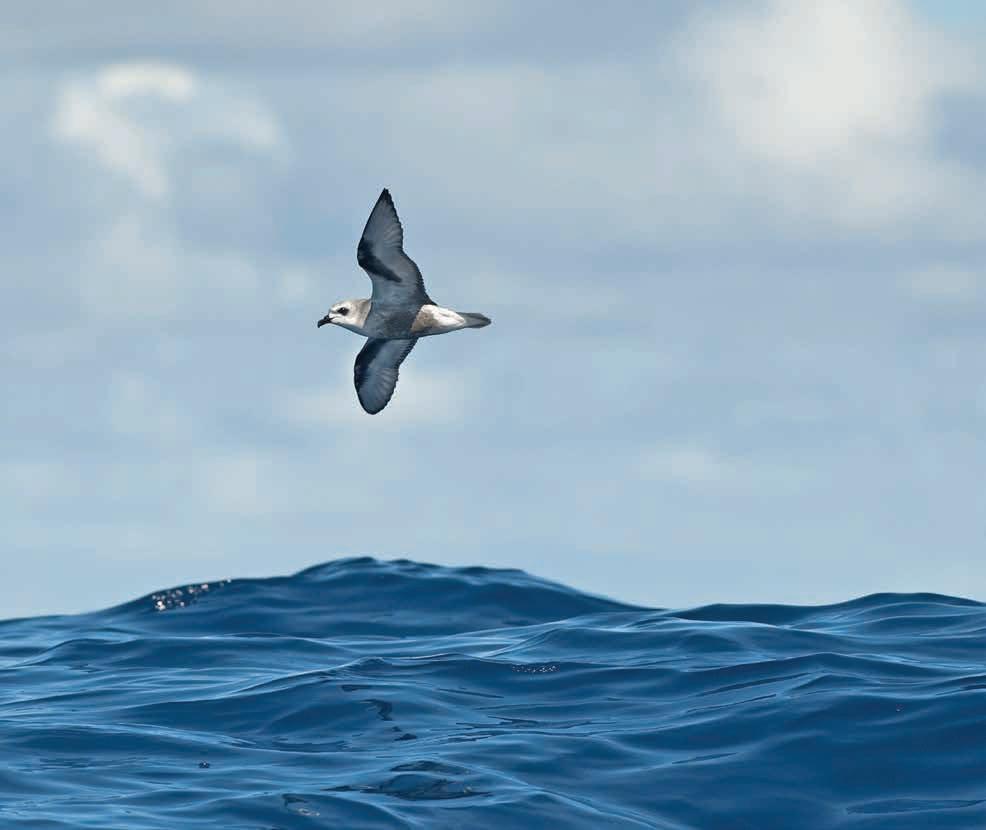
SuvA ForEShorE undEr thrEAt
Fiji’s seminal ‘State of the Environment Report’ (1993) identified the mudflats of the Suva Peninsula as an important migratory shorebird habitat. As a result, it was approved and listed as a ‘Site of National Significance’.
Recently, the Government has called for ‘Expressions of Interest’ from developers for conversion of the foreshore, initially for the mudflats and more recently for the last remaining significant areas of mangrove.
rESPonSE SEaBIRDS aND SHOREBIRDS
Figure 7: Fiji’s preliminary set of marine Important Bird Areas (Source: BirdLife 2012).
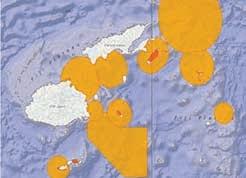
While our seabirds remain very poorly known by comparison with our landbirds, information has improved greatly in the last 10 years as a result of surveys of the Lau Group and identification of Marine Important Bird Areas.
Until recently, the breeding seabirds of the entire Lau Group were virtually unknown. Three surveys co-ordinated by the University of the South Pacific of North, Central and Southern Lau have provided an important baseline on seabird nesting colonies, including new nesting sites for nationally threatened species such as the Sooty Tern, Crested Tern, Bridled Terns, both species of Frigatebird and the Masked Booby.
BirdLife International has applied its global Important Bird Area criteria to seabird population estimates, especially of globally threatened species, to confirm the most important sites in the tropical Pacific for seabirds, now known as Marine Important Bird Areas. These are identified on the basis of breeding, feeding or areas important for migration or congregation. Twelve such sites have been identified on a preliminary list for Fiji (see Figure 7).
Better knowledge of the distribution of seabird nesting sites and marine IBAs has provided an initial focus for conservation action on the ground. Conservation organisations have initiated work with communities associated with seabird nesting sites, notably BirdLife in Kadavu and Vatu I Ra and NatureFiji-MareqetiViti on Gau with the threatened Fiji Petrel and Collared Petrel.
Most significantly, BirdLife International has undertaken the eradication of rats from 11 islands with important seabird nesting colonies. On several of these islands, nesting habitat has improved, numbers of nesting birds have increased and new species nesting on the island have been identified.
thE EnIgmAtIc FIjI PEtrEL
No more than 20 pairs of the Fiji Petrel are believed to survive. Eleazar O’Connor and Posa Qalo are Fiji Petrel Project Officers for NatureFiji-MareqetiViti in charge of two New Zealand-trained detector dogs. In their first year on the island they have found more than 50 petrel nests. All those nests whose occupants have been identified are Collared Petrels, but nearly 20 nests remain to be identified.
right: masked Booby Sula dactylatra © Steve Cranwell. rAt ErAdIcAtIon From SEABIrd nEStIng ISLAndS
Rats have reached about 80% of the world’s islands and are among the most successful invasive mammals. In Fiji, there are three species: the Pacific rat Rattus exulans, Brown rat Rattus norvegicus, and Ship rat Rattus rattus. The Ship rat is an agile climber and a serious predator of nesting birds.
© Steve Cranwell.

Successful Fiji rat eradication campaigns coordinated by BirdLife Fiji Programme have re-created nearly 300 ha of predator-free habitat on 11 islands. Now permanently cleared of introduced rats, these islands are being used for restoration of colonial nesting seabirds and recovery of threatened species such as invertebrates, lizards, forest birds, and some species of plants. By applying lessons learned from these campaigns, the cost-effectiveness of eradication campaigns has greatly improved.
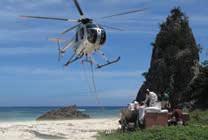
StAtE INTRODuCED PREDaTORS
EvoLvIng WIthout PrEdAtorS Introduced predators are one of the major contributors of species extinctions on islands. They also pose a threat to economic development, human health and food security. Since 1800, 90% of all bird extinctions have occurred on islands and more than half of these extinctions have been caused by introduced predators.

The Pacific has experienced one of the world’s most disastrous examples of the chance introduction of an alien predator. Guam is currently struggling to control the 3 million Brown tree snakes (Boiga irregularis) that have caused species extinctions and continue to cause power outages, as well as health and infrastructure problems.
Fiji’s birds evolved in the islands without any mammalian predators, so it’s not surprising that when introduced, these have had a devastating impact. Today, few of us wonder why the Jungle Fowl (Toaniveikau), the Banded Rail (Bici), and the Purple Swamphen (Teri) are not found on Viti Levu or Vanua Levu – ‘it’s just how it is’. But it’s not how it was: their absence today is due to the introduction of the mongoose1, which represent just the most obvious impact.The mongoose is responsible for the absence of several other birds as well as even more extensive impacts to Fiji’s reptiles and native frog. Fortunately, there are a few forest and hence biodiversity-rich islands such as Taveuni, Kadavu, Gau, Ovalau and Koro, that retain sizeable areas of biodiversity-rich forest and crucially are without the mongoose. Preventing mongooses from spreading to these islands is of the highest priority.
rEcognISIng thE cuLPrItS: rESEArch rEQuIrEd Currently, while there is general interest in alien invasives, little research has been done to determine the significance of the various introduced predators in respect of our birds and other biodiversity. There is a pressing need for research to provide data and evidence on exactly what is happening in Fiji and not to rely on experiences elsewhere. Much of the current ‘invasives’ concern is based on perception rather than evidence.
Conspicuous species such as Myna birds and Bulbuls are often blamed, while inconspicuous species like rats and feral cats are overlooked or their role downplayed. The mongoose is diurnal and everyone knows of it, even if they are not aware of what it is responsible for. Few of us are aware of the devastating impact of unseen predators on our forest birds. The most serious
1 We learned only in 2009 that there are two species of introduced mongoose in Fiji, herpestes javanicus and h.fuscus. Fiji has the dubious distinction of being the only country in the world (as far as we know), with two introduced species of mongoose. much-mALIgnEd mynAS
Myna birds and Bulbuls are conspicuous, introduced birds frequently blamed for ‘chasing the native birds into the bush’. Certainly they are both aggressive birds, and Mynas are proven egg thieves – but they are not forest-adapted species, so it is incorrect to blame them for the scarcity of native birds in our gardens and farmland. Our native birds are primarily forest-evolved birds and are
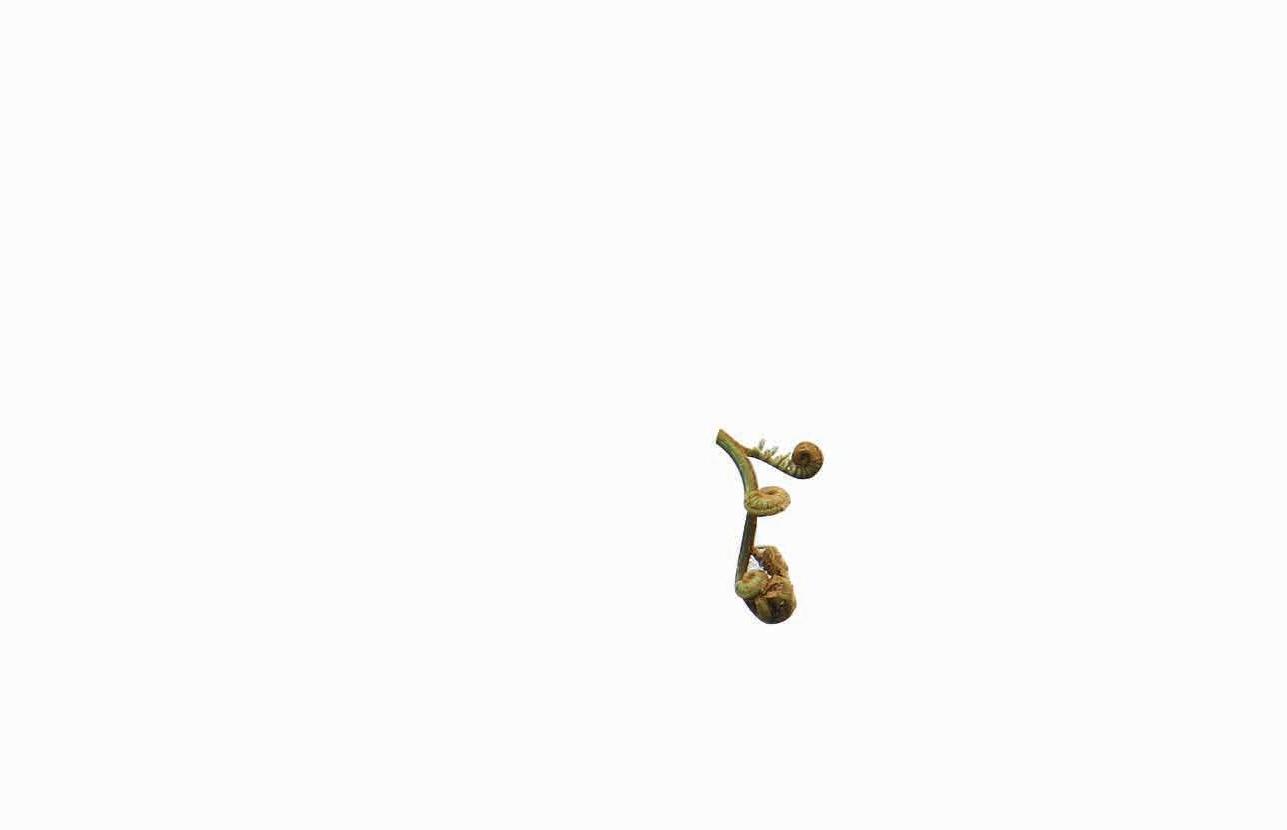
of these is the arboreal Ship rat, which has penetrated all forest types. Many of our forest birds would be found at much higher densities in the absence of the Ship rat, and these rats are likely responsible for the threatened status of some of our forest birds such as the Redthroated Lorikeet, the Long-legged Thicketbird and the Pink-billed Parrotfinch.

Studies in the United States have shown that the combined forces of ‘outdoor’ and feral cats may be responsible for tens of millions of bird fatalities each year. In Fiji too, feral cats are another unseen but highly destructive predator of birds and may well be primarily responsible for the extreme rarity of the Fiji Petrel, as the NatureFiji-MareqetiViti-led Fiji Petrel Project has found cat predation of nesting Collared Petrels to be high on the island of Gau where the Fiji Petrel also nests.
Left: red-vented Bulbul Pycnonotus cafer © Mark Fraser. not adapted to using open, cleared habitats. On the other hand, Mynas and Bulbuls are adapted to open, disturbed habitats and do not go far into the forest. So there is little or no displacement, just adaptation to different habitats. Fortunately there are some exceptions – the Kula (Collared Lory) is a conspicuous one, as it is at home from mountain forest through gardens to city centres and out to the mangroves.
thE BIg BAd FIvE
rats: ‘Unseen’ voracious predators, most seriously the arboreal Ship rat Rattus rattus;
Feral cats: Serious predators of birds;
mongooses: Two introduced species in Fiji – responsible for the loss of many ground-nesting birds as well as lizards and frogs on islands where they occur;
Feral pigs: Serious predators of groundnesting birds;
goats: On small islands, unmanaged goats can devastate nesting habitat for both seabirds and landbirds.
PrESSurE INTRODuCED PREDaTORS
While we know that rats, mongooses and feral cats are serious predators of our birds, the severity and extent of their impact remains to be clarified. It is likely to vary between bird species. It is quite likely that the impact of the introduction of the Ship rat less than 200 years ago is still being felt and the decline of the Red-throated Lorikeet in the last 30 years could be attributed to Ship rats. Whatever, the predatory pressure remains and we urgently need to know the extent of it in respect of our threatened birds.

red-throated Lorikeet charmosyna amabilis © W.A. Beckon. doES thE rEd-throAtEd LorIKEEt StILL SurvIvE?
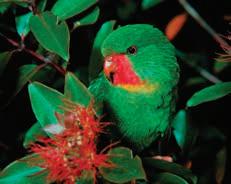
There has been no confirmed sighting of Kulawai, the Red-throated Lorikeet, since 1993, despite over 2100 hours of searching by local and overseas ornithologists. It is now considered lost from Viti Levu and our hopes for its continued survival rest on a possible population on Taveuni. disturbance and increased predation by rats following the opening of the Viti Levu highlands for the construction of the Monasavu dam is believed to be the reason for its apparent local extinction on Viti Levu.
coLLArEd PEtrEL KILLEd By FErAL cAt
The first-ever nesting colony of the Collared Petrel was found by the Fiji Petrel Project at Savalevu, Gau in May 2012. Feral cats had killed at least seven Collared Petrels at the twenty-nest colony by the time some of the chicks had departed in August of that year.
Setting a cat trap © Eleazar O’Connor. The world is becoming a smaller and more accesible place, and with a constant increase in international shipping and air transport, the chances of the accidental introduction of additional serious predators or competitors of our birds is very real. Recently an air link was opened between Guam and Fiji, providing a ready conduit for entry of the Brown Tree Snake. Fortunately, for the time being at least, the air link has been suspended.
In FIjI And thE PAcIFIc
A very successful invasive pest that is spreading fast through the Caribbean and on mainland USA, the American Iguana’s arrival in Fiji represents the first established population in the Pacific and is a potential bridgehead to the world’s most isolated The issue for small island national governments such as Fiji’s is not just to be able to detect invasive species arriving in the country but to be able to quickly recognise the significance of a situation and mount an effective response as promptly as possible. The recent arrival of the American (Green) Iguana Iguana iguana to Fiji has illustrated the difficulties of mounting a national-level commitment with appropriate funding and the necessary 5-10 year eradication
PrEvEntIng thE EStABLIShmEnt oF thE AmErIcAn (grEEn) IguAnA time-frame.
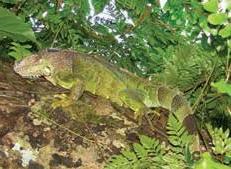
island ecosystems. NatureFiji-MareqetiViti, working with the Biosecurity Authority of Fiji, has undertaken an extensive awareness programme and training among the communities on Qamea and surrounding islands to encourage their support for this
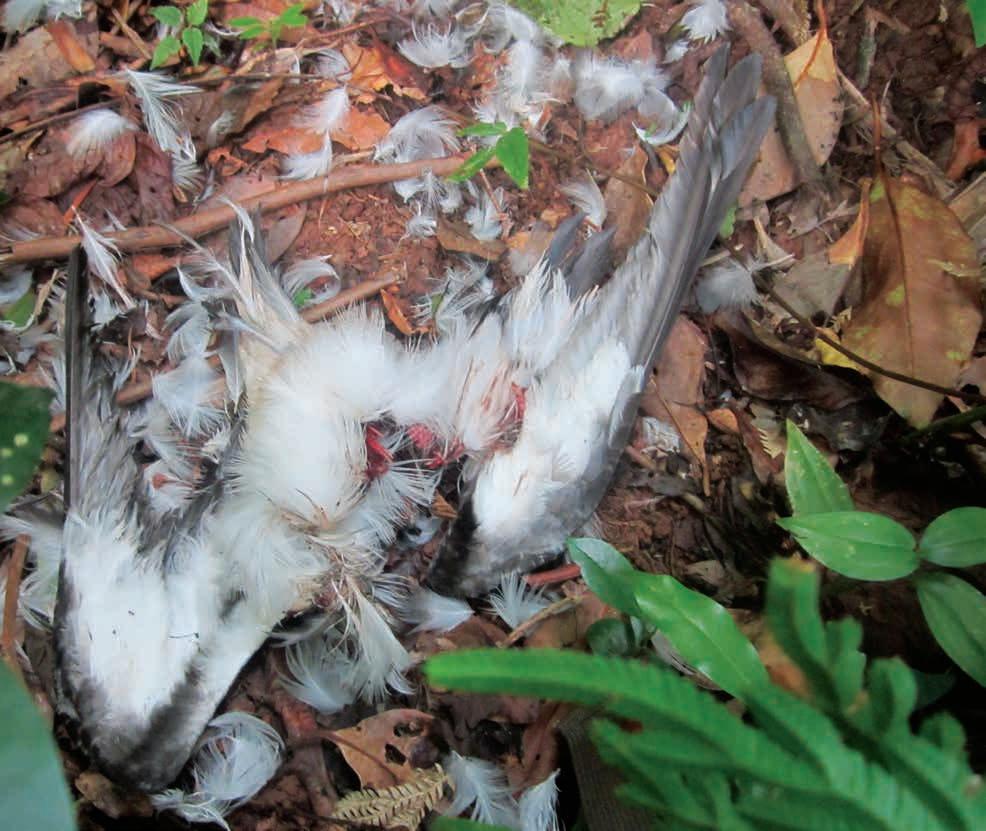
iguana’s eradication. However, the newly-established Biosecurity Authority of Fiji has not yet been able to acquire sufficient resources to have any chance of eradicating the iguana. Qamea, where the iguana is established, neighbours Taveuni, Fiji’s conservation stronghold, and the iguana’s spread to that island would be a biodiversity conservation disaster.
Left: collared Petrel killed by a cat © Eleazar O’Connor. Above: American Iguana Iguana iguana © Rick van Veen.
rESPonSE INTRODuCED PREDaTORS
In order to confront the problem of invasive pests, the Government has recently established the independent Biosecurity Authority of Fiji to address such issues in an independent and professional manner. Vigilance at our borders is essential; this is not mere rhetoric, as we know full well with the arrival of the American (Green) Iguana to Fiji.
While rats and feral cats are usually nocturnal and unseen, few people apart from scientists appear to be aware of how serious these predators are, which is a problem when encouraging support for their control. However, over the past few years, with the support of landowners, a successful start has been made with removing rats from islands that have important seabird nesting colonies. More of a challenge will be the establishment of rat and catfree protected areas of native forest to benefit some of our threatened endemic forest birds.
Ensuring that the mongoose does not spread further than its current distribution of 11 islands in Fiji, and preventing the entry of extremely serious invasive species such as the Brown Tree Snake, are vital to minimising the chances of any further invasive predators that could threaten Fiji’s birds and biodiversity.
With the Biosecurity Authority of Fiji, NatureFijiMareqetiViti is currently implementing a capacity-building project to prevent the spread of invasive alien species, focusing on Mongooses, the Brown Tree Snake and the American Iguana. Actions have included the production of risk assessments for the introduction and spread of the Brown Tree Snake and the Mongoose in Fiji and incursion response plans for the establishment of American Iguanas on Taveuni and beyond.
These risk assessments and associated ‘response plans’ will enable government, private sectors and communities to prevent and respond to an incursion in an effective and efficient manner.
There is also advocacy and capacity-building to key government agencies and communities to strengthen biosecurity and border surveillance at inter-island and national ports.

Above: nukupureti and nukubasaga, two seabird breeding islands in the ringgolds group, from which rats have been removed © Steve Cranwell. ErAdIcAtIon oF IntroducEd InvASIvES on SmALL ISLAndS To date, successful Fiji rat eradication campaigns co-ordinated by BirdLife Fiji Programme have re-created nearly 300 ha of predator-free habitat on 11 islands. The island of Monuriki supports a large colony of Wedge-tailed Shearwaters.
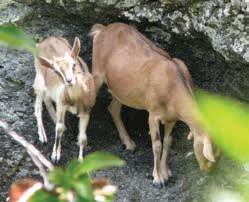

With the support of the landowners, rats and goats were eradicated from the island in 2011.
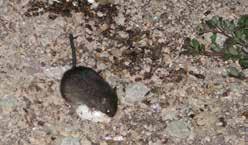
Left: rats and goats have been removed from monuriki Island © Stuart Chape. top: Feral goats on monuriki Island before their removal © Steve Cranwell. Lower: Polynesian rat eating Sooty tern egg © Steve Cranwell.





